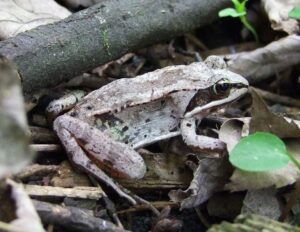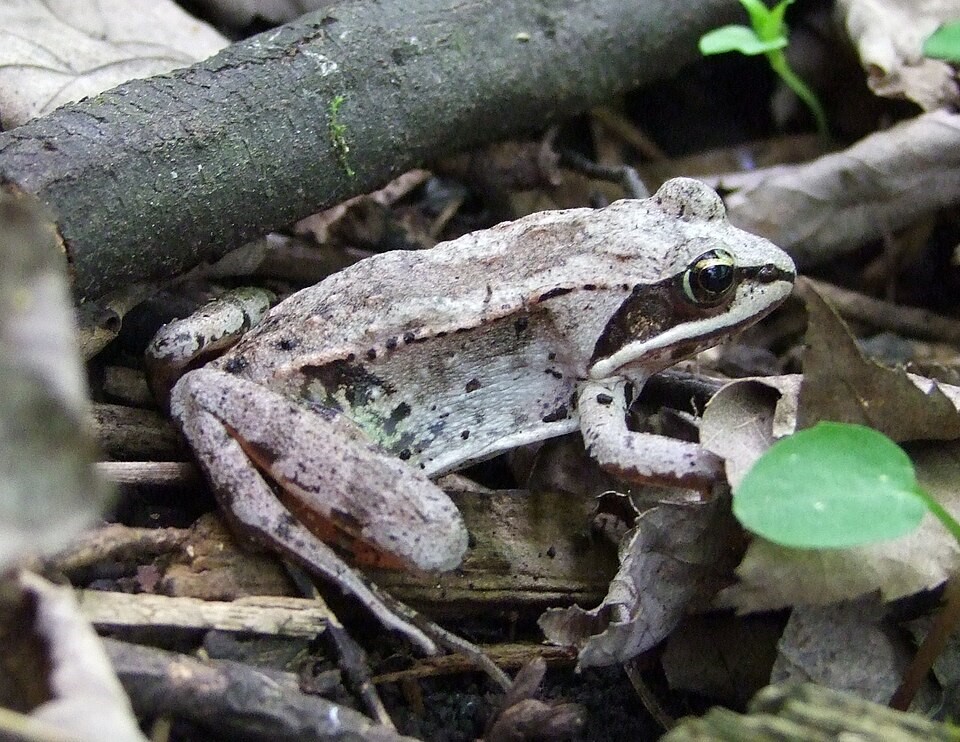
How do some animals freeze and not die? There are a few animals that can freeze solid in the winter and then thaw out again in the spring without any damage to their bodies. They do this by producing a type of antifreeze.
We could easily freeze solid in the winter, but that would be the end of us. There would be no way for us to come back. Our organs would suffer irreparable damage and there would be no way to restart our hearts. The main problem with freezing something living is the damage caused by ice crystals. When you freeze anything with liquid in it, the water loses energy and turns to ice. Ice crystals form at places called nucleation sites, which are particles that the ice starts to freeze around, and when something is frozen slowly, there are not many nucleation sites. The ice crystals that form at each nucleation site are large. Large crystals can puncture cell walls and they can also suck liquid out of the cells, dehydrating them. If you freeze a piece of fruit slowly and then thaw it out, it will be all mushy. That is because of the ice crystals. When we freeze food, we flash freeze it to avoid that. When you freeze something very quickly, there are many more nucleation sites and the ice crystals that form are very small. These small crystals don’t damage the cells.
So, what animals can freeze and be fine? There are several: the wood frog, some insects, tardigrades, the Arctic ground squirrel, and some worms. They are all able to function after the winter. Let’s look at them in turn. Tardigrades and the insects can survive being frozen by dehydrating themselves. Tardigrades and some insects that live in very cold climates are able to expel water from their cells. This dehydrates them and if they don’t have any water, they don’t have to worry about ice crystals. They are not technically frozen, but they can survive the winter, and when they are rehydrated, they are fine. Arctic ground squirrels can also survive very cold temperatures when they are hibernating, but they are also not technically frozen. They hibernate for about eight months and their core temperature falls to -2.9℃, yet they don’t freeze. They can do this by cleansing their blood of any particles that would become nucleation sites, preventing ice from forming. And then there are ice worms, which only live in ice. If you warm them up, they die. They can survive because their enzymes function at much lower temperatures.
So, the wood frog is the only animal that completely freezes solid. Frogs have several ways of hibernating. Some hibernate at the bottom of water, and others burrow into the mud to stay warm. Some smaller frogs that can’t burrow into the earth hide under leaves, or in the cracks of rocks, or inside trees. And then there are wood frogs, which just let themselves freeze. They make a nest of leaves, and then just let themselves slowly freeze. Their organs freeze, their hearts stop, their brains stop functioning, and their eyes freeze over. They stay like that until the weather warms up and the thaw. When they thaw, they have no adverse effects and as they were before they froze. How do they do it?
They have two tricks. The first is glucose. As the frogs freeze, their livers produce huge quantities of glucose. Glucose is similar to salt in that it can lower the freezing temperature of water. The masses of glucose in the frog’s body acts like antifreeze and prevents some of the organs from freezing completely. They may appear frozen, but only about 70% of the frog freezes. That is still pretty impressive. The second trick is to use microRNA to switch off certain genes that control its metabolism, such as for cell growth, and switch on certain genes that will protect it, such as the genes that strengthen cell structures and enzymes that control the stress response. All of this keeps the frog alive, but frozen.
There are still a few things about the wood frog’s ability to survive freezing that scientists have yet to work out. The ice in the frog doesn’t form randomly. It starts in the skin and then travels up the blood vessels to the organs, but it spreads around and between the organs in a non-random pattern. It is as though the frogs can control where the ice goes. And scientists still don’t know how frogs go back to normal. Even with all of their adaptations, they injure themselves. Their cells rupture and they end up with a lot of damage, but they are able to fix it very quickly. No one knows how. And this is what I learned today.
Sources
https://www.nationalgeographic.com/animals/article/animals-freeze-then-thaw-explained
https://www.discoverwildlife.com/animal-facts/can-any-animals-survive-freezing
https://www.scientificamerican.com/article/how-do-frogs-survive-wint
https://en.wikipedia.org/wiki/Flash_freezing
https://en.wikipedia.org/wiki/Ice_worm
Images By W-van – Own work, CC BY 3.0, https://commons.wikimedia.org/w/index.php?curid=10362728

